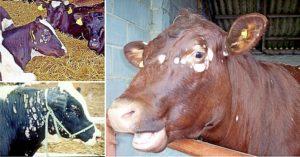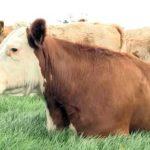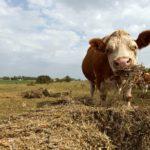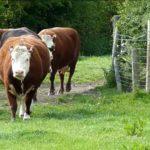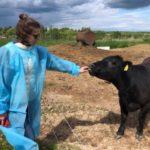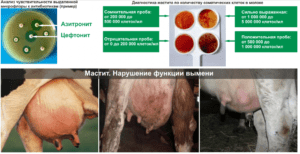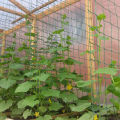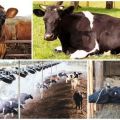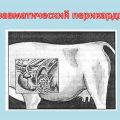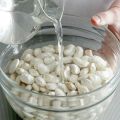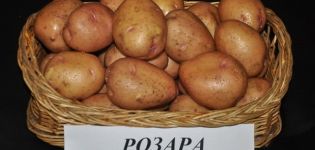Causes and signs of traumatic reticulitis in cattle, treatment and prevention
The peculiarities of feeding behavior of cattle can lead to diseases, for example, to the development of traumatic reticulitis. This is a non-contagious disease, an inflammatory lesion of the mesh as a result of foreign sharp objects getting into it. Consider the causes and symptoms of reticulitis, diagnosis and treatment options, the danger of wall trauma and how to prevent it at home.
Reticulitis reasons
By the nature of the course, traumatic reticulitis is acute and chronic. The cattle mesh is located in the front of the belly, near the diaphragm and liver. Only 2-4 cm separates it from the heart, so sharp objects can injure the pericardium, resulting in reticulopericarditis.
The development of traumatic reticulitis is caused by sharp objects hitting the mesh - metal wire, nails, other metal products and piercing the walls of the organ. Cows grazing in the pasture can swallow them along with the grass. Eating is facilitated by the weak sensitivity of the tongue of cattle (small livestock less often swallow sharp objects, since their sensitivity is better).
The disease is diagnosed mainly in animals aged 3-9 years; highly productive individuals and pregnant women are more susceptible to it. Also, reticulitis is often found in animals that are underfed, whose diet is inadequate, or the feeding regime is violated. The main reason for eating foreign objects can be considered a lack of mineral elements in the feed. Cows begin to lick and eat various inedible items.
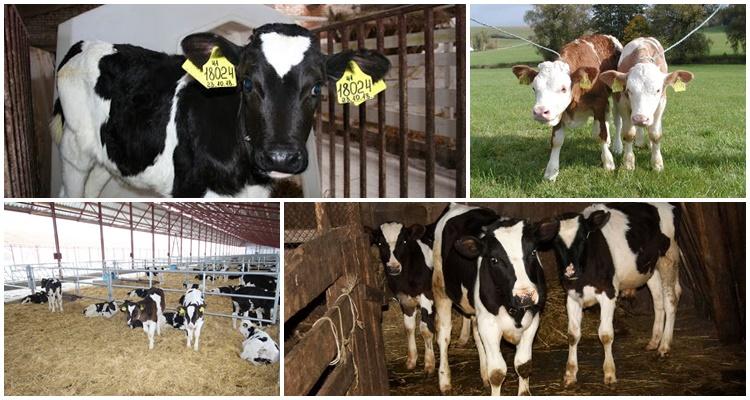
Objects swallowed with grass and hay remain in the net, much less often in the rumen and the book. Those that have blunt edges and a rounded shape can lie there for a long time, without interfering with the animal. Sharp objects as a result of the contraction of the mesh can partially or completely pierce its walls. With a complete piercing, the object moves further and injures the diaphragm, peritoneum. The heart, lungs, liver, and other digestive organs - spleen, abomasum, book may be affected. There are times when sharp objects are squeezed back into the mesh, and then injure its wall in a new place.
Symptoms of the disease
At the site of perforation of the wall by a foreign body, inflammation develops, and infection often joins, causing putrefactive and purulent processes. Signs of traumatic reticulitis can be different, their manifestation depends on how intense the inflammatory process is, as well as on its age. With an incomplete puncture of the mesh, the disease may be asymptomatic, there can only be a decrease and weakening of chewing gum and belching.
The acute form of reticulitis (wall perforation) in cattle is expressed in anxiety, loss of appetite, atony and hypotension of the proventriculus. The animal's temperature rises for a short time, and the pulse quickens. Milk yield is sharply reduced. When traumatized, the animal experiences pain when moving, belching, when standing up. It often lies down or crosses its feet, and can moan. In the chronic form (which happens more often), the severity of the symptoms is mild, but they recur repeatedly. There is no painful syndrome.
In addition to the symptoms listed above, cows periodically experience tympanic symptoms, weakening of intestinal motility.
How is the disease diagnosed
With traumatic reticulitis, a pain symptom is characteristic, therefore, one of the diagnostic methods looks like this: a stick is passed under the belly of a cow and lifted from 2 sides. The pain that the animal will experience may indicate trauma to the stomach with a sharp object.
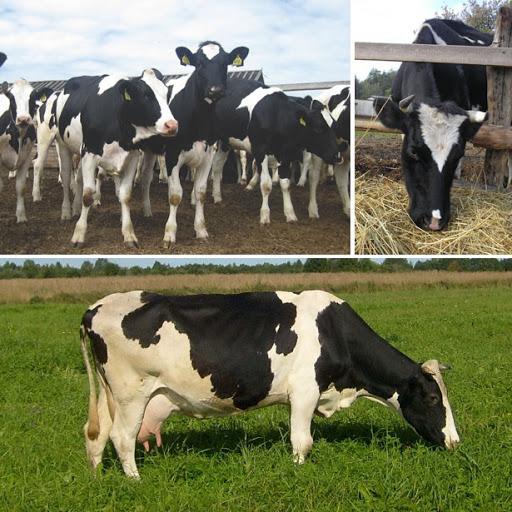
The diagnostic method for determining the disease in animals is the introduction of magnetic probes into the proventriculus. The probes not only help to accurately diagnose reticulitis, but also remove metal from the mesh. Before the procedure, the cow is not fed for 12 hours, only water is given (2 liters must be drunk before diagnosis). The probe is inserted through the nose, in front of the pharynx, a chain with a magnet is attached to it. The tube is inserted into the throat and the cow swallows it. The device is left in the grid for a day. Before removing the probe back, the animal is given water again. Remove it carefully in the reverse order.
To detect metal objects in a cow's stomach, a metal detector can be used as an alternative to probes. X-ray examination is used.
Technique for the treatment of reticulitis in cows
For treatment, conservative and drug methods are used. When conservative, roughage is removed from the diet and cows are fed with talkers, slimy broths, which reduce the activity of the net. With medication, antibiotics are injected, for example, penicillin in a solution of novocaine. Antibiotics reduce inflammation.
If the object is only in the net without piercing its wall, it can be pulled out with a magnetic probe. If it is stuck in the wall, you cannot do without surgery. The mesh in cattle is accessed through the rumen. The animal is fixed in the machine, local anesthesia is done, antipsychotics and drugs that relax the muscles are used. Through the incision, the mesh is freed from the contents, the metal object is removed, the cavity is treated with antiseptics. The incision is sutured and also treated with antiseptic agents.
Caring for a cow after surgery consists in keeping the animal separately for 2 weeks. The first 3-5 days, you need to reduce the amount of feed consumed. Stitches can be removed 10 days after surgery.
Potential danger
Traumatic reticulitis often results in the loss of a cow. If a sharp object pierces not only the mesh, but also other internal organs, bleeding may begin. But any damage to the wall does not bring anything good to the animal - inflammation begins at the puncture site, which then turns into suppuration. Blood poisoning and death of livestock can occur.
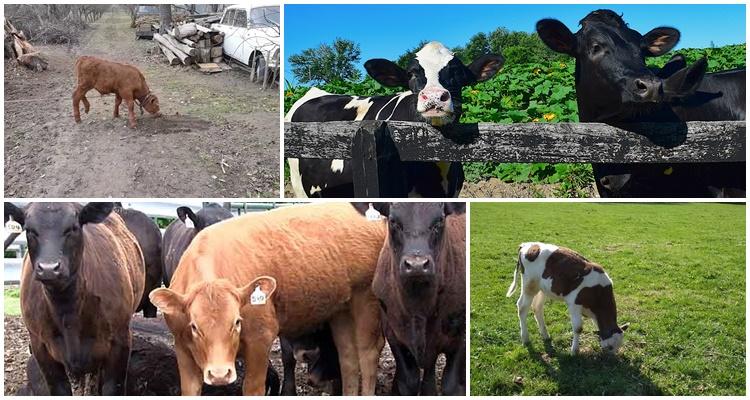
Preventive actions
It is necessary to cleanse pastures and walking areas from metal objects before grazing livestock on them.Monitor the cleanliness of feed and hay. Do not graze livestock near highways, landfills, construction sites.
Feed the animals properly: monitor the content of minerals and important nutrients in foods. So that animals do not experience a deficiency of trace elements and they do not have a desire to eat inedible.
On large farms, to prevent reticulitis, animals are introduced with magnetic rings that securely fix objects inside, preventing them from piercing the wall. Eating wire, nails, and other metal objects is not uncommon. Despite the fact that traumatic reticulitis lasts for a long time and has almost no symptoms, it is often possible to help the animal only with the help of an operation. Without treatment, it may die.
